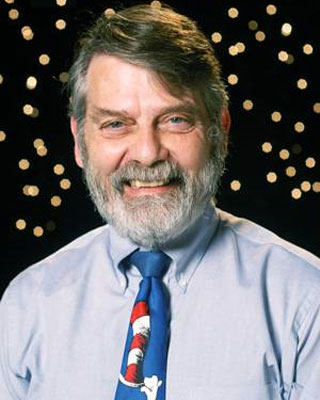Home > On-Demand Archives > Talks >
Let’s Assume the System is Synchronized
fred harris - Watch Now - EOC 2025 - Duration: 02:12:37

It is amazing how many papers on radio systems contain a version of the sentence “Let’s assume the system is synchronized.” Alright, let’s assume the system is synchronized. But I have a few questions: Who did it? How did they do it? Who will do it in the next decades as many of us retire from the field? An important one is: where are they acquiring the skills required to negotiate and navigate future physical layers?
This brings us to the question of “What do we mean by synchronize”? Its etymology starts with Chronos, the ancient Greek Immortal Being personified in the modern age as Father Time. We thus form synchronize from the Greek prefix syn, meaning “together with,” and chronos which we interpret as “time”.
With the industrial revolution and the rise of high-speed railroads came the need to synchronize clocks in adjacent towns to maintain timetables and prevent accidents. Today, the higher-speed transport of communication signals places an even greater premium on time measurement and alignment of remote clocks and oscillators.
When discussing the importance of synchronization in my modem design class, I remind students that Momma’s middle name is synchronizer! If the radio is not synchronized, no other system can operate—
- Not the matched filters
- Not the equalizer
- Not the detectors
- Not the error correcting codes
- Not the decryption
- Not the source decoding
At the waveform level, synchronization entails the frequency and phase alignment of remote oscillators for carrier acquisition and tracking, symbol timing, and chip alignment in spread spectrum systems.
What have we missed by assuming the system is synchronized? We’ve skipped a challenging and fascinating part of the process: estimating unknown parameters of a known signal in noise. We’ve replaced the task of processing a noisy waveform with processing a binary stream, and we’ve skipped making Momma happy!
Digital Signal Processing is now standard in modulators and demodulators of modern systems. These require acquiring carrier and clock from signals where neither is explicitly present. Synchronization info must be extracted from:
- Implicit side information in the modulated signal
- Explicit side information in pilot signals
Many ad-hoc analog synchronization methods predate optimal techniques. As DSP emerged, these analog schemes were often digitized and reused. But returning to first principles in DSP can offer performance gains.
In this presentation, we’ll review:
- Receiver structures and parameters to estimate
- Eye and constellation diagrams
- Phase-locked loops and their digital counterparts
- Timing and carrier recovery methods (with and without data decisions)
- Real-world synchronization in modern systems
MATLAB demos will illustrate key ideas. We’ll also highlight historical and modern synchronization techniques from the Digital Communications: Fundamentals and Applications text by Bernie Sklar and Fred harris. The tutorial’s goal is to equip DSP radio designers with modern synchronization methods made possible by DSP maturity—enhancing performance, reducing cost, and improving design satisfaction.
Offset QPOSK has an interesting problem. The timing and phase PLLs have to be nested, they don't work well if the run as two different loops. This may be part of the problem. I just tried looking for my code, will have to spend more time
can you post the code for the presentation. I'm looking for the band edge filter examples.


















Is the band edge FLL supposed to work also for Offset QPSK? While my implementation works fine for vanilla QPSK, I couldn't make it work reliably for OQPSK.